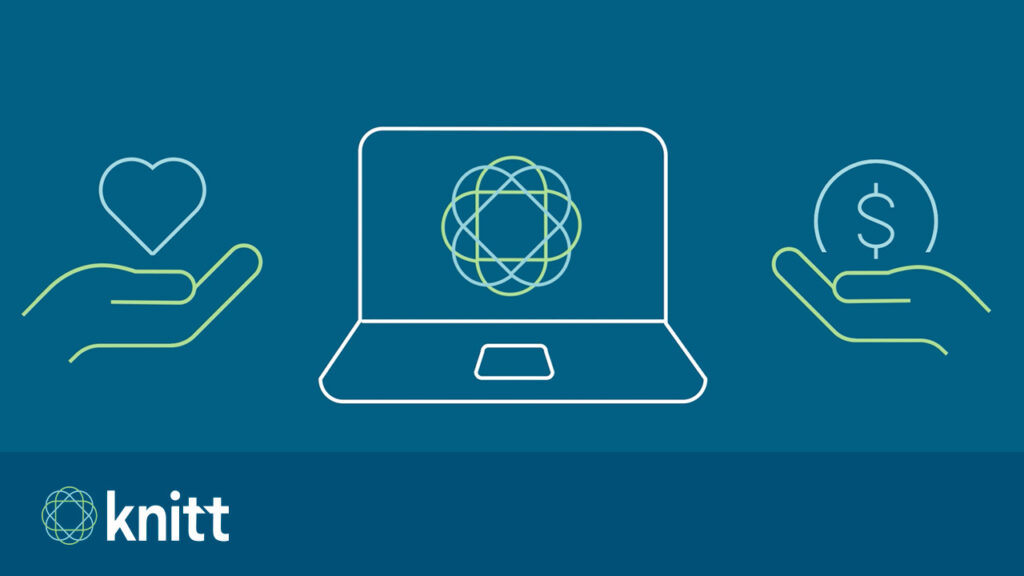‘Match.com for philanthropy’: Knitt helping nonprofits and businesses connect

After spending 15 years in the nonprofit sector, Lisa Munter has first-hand experience with the difficulties of finding and connecting with supporters. Now, she’s looking to change that with the launch of Knitt, a website to help nonprofit organizations and businesses connect with each other.
“Regardless of who I was volunteering for, I was still hearing the same level of frustration,” said Munter. “‘Where’s our next level of support going to come from?’”
Munter said many nonprofits do not have the time or funds to seek out necessary supporters, while saying that on the other side, business owners can become “inundated with responses.”
“Even though they want to do their due diligence, it’s reactionary, because a lot of times they’re just trying to keep up with the requests. They’re busy focusing on their job,” Munter said. “So a lot of times, you hear the pain point of frustration of getting inundated with requests, not really having a real mindfulness about who they’re giving to and why they’re giving.
“I just was like, ‘OK, how do we simplify this and bridge the gap?”
That is where Knitt comes in. Munter described Knitt as a “web-based platform that mindfully connects nonprofits and business owners in a time-efficient and sustainable way.”
“We call it the Match.com for philanthropy, because it really is just that,” said Munter.
Nonprofit organizations and businesses can fill out a profile on the site, and will be matched with organizations who share similar interests and values.
“What it does is it allows you to get out of the hamster wheel of the time that it takes in order to find the right relationships,” said Munter. “It’s like the ultimate networking platform.”
Knitt simplifies the process of connecting for nonprofits and businesses, but also ensures they are being connected with organizations that are strong fits.
“Giving should not be transactional,” Munter said. “It’s supposed to be purposeful, and it’s about sustainability, it’s about the relationship behind that.”
This can help businesses and nonprofits cut back on the time spent sending or receiving requests for support, Munter said.
“If you’re giving to multiple organizations, or you’re getting inundated with requests, or if you’re spending several hours a month filtering through all of the mailings and email and text requests, try Knitt,” said Munter. “Because it will simplify and streamline that process, and it will weed out those relationships that you have a hard time saying no to.”
Munter said that businesses can select which specific types of organizations they want to be matched with, helping avoid requests that may not be a good fit.
“It’s kind of a polite way of the ‘no solicitations’ sign, which can be negative,” Munter said.
Before launching, the Knitt website went through a long process, with Munter saying they went through a year and a half of customer discovery and launched a beta phase for businesses and nonprofits to test out.
“I met with local nonprofits and business owners, hearing all of the things that frustrate them, and how they would prefer it to be, and then built it into the platform,” said Munter.
And organizations were even finding matches in the beta phase, with Munter saying one nonprofit had been “trying for years” to connect with a potential donor before the two matched on Knitt during the beta phase.
“They happened to match on Knitt, during beta, and because of that fictitious relationship, it opened the door for an actual, real relationship,” Munter said. “Now that donor was going to help support their next fundraiser.”
Munter said she is proud of Knitt for helping organizations understand the reasons behind specific donations and support, which she referred to as “the why.”
“I feel like we are the only thing out there right now that really is a true understanding of the ‘why’. The why of the mission, and an understanding of the why of the donor, why they give,” said Munter. “Why not use Knitt, and you’re linked instantly. You know why you are matched, and then you can continue that journey of a conversation and a relationship.”
Knitt also has a decline feature for matched organizations, which requires the declining side to input a reason why the match was turned down.
“Sometimes the understanding of the no is just as valuable as the understanding of the yes,” said Munter, noting that it can allow organizations to see where their message could improve.
The site also has a suggestion box, allowing users to send in notes and comments on possible ways to improve the service.
Knitt operates on a subscription-based model, with Munter saying it is set up as a tiered system. Nonprofits pay a $50 signup fee, which Munter said helps Knitt vet the organizations. Nonprofits can then utilize the site for free until they receive $5,000 in donations, then are moved to a $40 per month plan according to the Knitt website.
It is similar for businesses, beginning as a free service until $2,500 is donated, at which point the donor is moved to a $20 per month plan, the website shows. The plans for both nonprofits and businesses continue to increase in price once other donation points are reached. Yearly payment plans are also offered.
“If you know you give to multiple organizations, or if you’re a new business to an area and you’re looking to get involved, sign up for Knitt,” said Munter. “Fill out your profile, and see who comes into your inbox.”